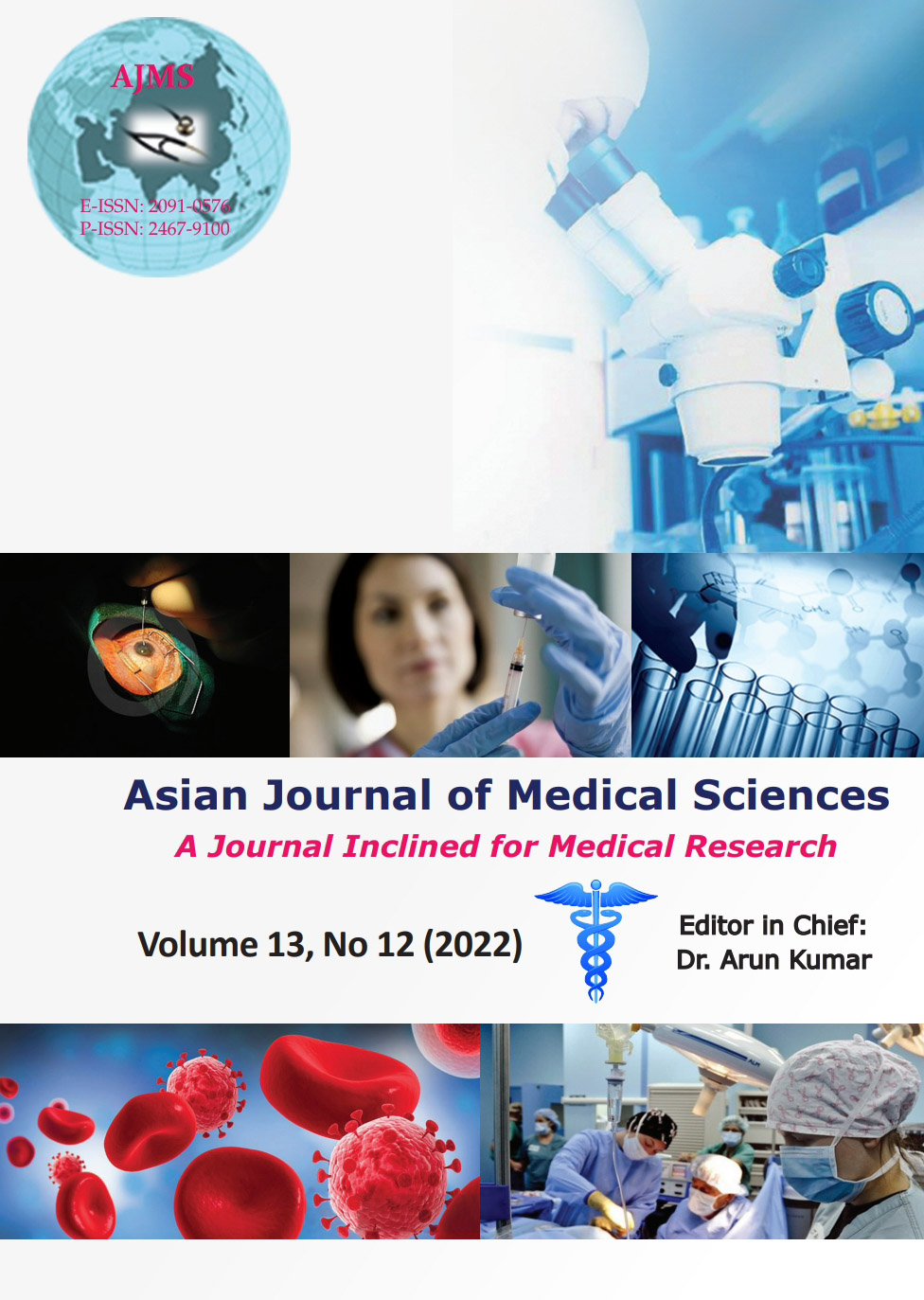A study to observe the association of pupil-to-limbus diameter ratio with blood pressure and pulse rate in type 2 diabetic patients
Keywords:
Autonomic functions; Diabetes mellitus; Pupil–to-limbus diameterAbstract
Background: Understanding the autonomic activity in the early hand helps to begin with effective treatment for the benefit of the individual with type 2 diabetes.
Aims and Objectives: The present study was undertaken to observe the association of pupil-to-limbus diameter ratio with blood pressure and pulse rate in type 2 diabetic patients.
Materials and Methods: A total of 100 participants with type 2 diabetes were part of the study after obtaining written, voluntary, and informed consent. Recording of the pupil-to-limbus diameter (PLD) ratio was performed using two box method which is a standard method mentioned in the literature. Blood pressure and pulse rate were used using a diamond digital sphygmomanometer (BPDG024).
Results: There was a significant (P<0.00001) positive correlation between the PLD ratio of the right eye and pulse rate. There was a significant (P<0.05) negative correlation between the PLD ratio of the right eye and systolic blood pressure (SBP). There was a significant (P<0.05) negative correlation between the PLD ratio of the right eye and diastolic blood pressure (DBP). There was a significant (P<0.00001) positive correlation between the PLD ratio of the left eye and pulse rate. There was a significant (P=0.000076) negative correlation between the PLD ratio of the left eye and SBP. There was a significant (P=0.000458) negative correlation between the PLD ratio of the left eye and DBP.
Conclusion: The study results revealed a significant positive correlation between the PLD ratio of the right and left eye with the pulse rate. There was a significant negative correlation between the PLD ratio of the right and left eye with both systolic and DBP.
Downloads
Downloads
Published
How to Cite
Issue
Section
License
Copyright (c) 2022 Asian Journal of Medical Sciences

This work is licensed under a Creative Commons Attribution-NonCommercial 4.0 International License.
Authors who publish with this journal agree to the following terms:
- The journal holds copyright and publishes the work under a Creative Commons CC-BY-NC license that permits use, distribution and reprduction in any medium, provided the original work is properly cited and is not used for commercial purposes. The journal should be recognised as the original publisher of this work.
- Authors are able to enter into separate, additional contractual arrangements for the non-exclusive distribution of the journal's published version of the work (e.g., post it to an institutional repository or publish it in a book), with an acknowledgement of its initial publication in this journal.
- Authors are permitted and encouraged to post their work online (e.g., in institutional repositories or on their website) prior to and during the submission process, as it can lead to productive exchanges, as well as earlier and greater citation of published work (See The Effect of Open Access).




